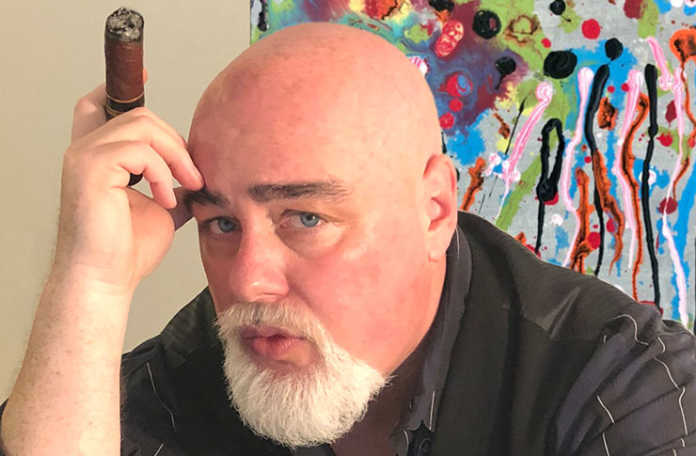Lee’s jewelry collections have been worn by Hollywood stars, celebrities, royalty, and heads of states. His merchandise has been featured on high rated television shows, award shows and red carpets.
So who, precisely, is Vin Lee? He’s CEO of Beverly Hills-based Grand Metropolitan, managing a $7 billion portfolio of some 60 luxury brands.
They range from the behemoth billion-dollar industries as Heilig-Meyers Furniture, to Finlay Fine Jewelers.
For a matter of context, Grand Metropolitan was one of the most influential wine and spirits corporations around the world, whose roots go back decades, and included hotels and dozens of consumer brands on both sides of the pond. He bought the brand in the late 1990s “specifically to represent all of our varied interests in the luxury world,” he explains.
Grand Metropolitan brand names have been splashed all over as sponsors of PGA Tours, NFL Super Bowl events, NASCAR, international film festivals, Formula 1, and brand marketing campaigns.

Spooling back to the late 80s, success came early for Lee, who became a self-made millionaire in his late teens.
One of his first breakthrough ideas was inventing specialized mechanical illuminated marquee signs – now a $6 billion global industry – used by McDonald’s, Walt Disney, Blockbuster, Universal Studios, Las Vegas, and Ripley’s Believe It Or Not Museums, and scores of others. Applications for his patents numbered 100,000 for retail franchises.
Seeds of ingenuity and ambition were planted early when his first experience overseeing a known brand came when he wasn’t even old enough to legally drink alcohol.
Michigan’s Grand Traverse Resort including legend Jack Nicklaus’ Golden Bear course, developed a top-line reputation for national events, but its mammoth expansion, which included luxury homes, was a cost too great to bear. By 1992, the resort developer filed for bankruptcy, unable to reconcile an $80 million debt. Lee saw an opportunity. With a proposal for a turnaround, Lee scored meetings with Grand Traverse management and negotiated a three-year mandate to rescue the sinking ship.
And that he did, rebooting the resort to have the look and feel of an elite destination, a world-class spa and golf mecca.
His first foray into the jewelry industry was at age 22, from a celebratory stop to buy a Rolex President at DuQuet Jewelers, to reward himself for the successful campaign with the Resort.
Enchanted by the proprietor’s stories on the topic, Lee made his first investment in the jewelry industry, then and there.
He bought the store, a five-decade-old business, from its owner, who had already succeeded in building the brand’s reputation by selling upper-tier tailor-made offerings, and products that had become centrepieces of several annual black-tie events.
Ambitious as well as knowledge-hungry, he rolled through a quarter century’s worth of trade magazines, sustaining his keen interest to today. This introduction to the diamond market, and what he dubs “outsized ambition” is what spurred his continuing interest in gobbling up the industry’s brands.

As a result of his achievements, he says he has “been very fortunate to rub elbows with some of the most successful people in the world.” Lee’s own creative pieces have been worn by celebrities, diplomats and royalty; adorned by stars at awards ceremonies.
In 2001, he invented the “Tennis Earring” also called “the ear cuff”, which premiered at Cannes Film Festival, later to be featured on The Tonight Show with Jay Leno, and countless red carpets. The diamond suite was debuted at the Cannes Film Festival where the daughter of the French President Mitterand wore several pieces.
Today, you can find the diamond “ear cuff” on red carpets and TV screens around the world, by beautiful ladies like Jennifer Lawrence, Ivanka Trump, Kelly Anne Conway, and Ariel Winter.
He launched the Diamond Channel, in collaboration with several North American large jewelry manufacturers, in what became the largest global online jewelry database.
It featured more than 46,000 SKUs, each with over 128,000 different design selections, for limitless custom choices. Redubbed the Diamond Standard, Lee sold it to the owners of Labelux (now JAB Holdings owner of Kuerig), then operated Jimmy Choo, Bally, Derek Lam and Zagliani.
It wasn’t always a smooth ride for the industry, though. The last recession was unkind to iconic jewelry retailers, who began defaulting on overextended credit. The heavyweights – Zale Corporation, Town and Country, Michael Anthony Jewelers, and Aurafin (Berkshire Hathaway’s Richline Group) – were sinking; while the Signet Group, the largest worldwide jewelry company, cut 300 locations. So many other known names, too, were closing shops. It didn’t help that the price of gold dipped to lows not seen since the 70s.
In 2009, Finlay Enterprises – whose footprint was found in 1,100 department and freestanding stores and earning a $1 billion in annual revenue– filed for bankruptcy protection, buckling under more than half-billion dollars US debt.
Two years later, Lee’s company Grand Metropolitan acquired some of the company assets including the Finlay brand.
Finlay’s products have graced the red carpets of events as the Golden Globes, Academy Awards, Grammy’s, among many other glam events.
Today, Finlay Fine Jewelers has continued to grow into the largest privately held jewelry group in North America, recently adding Samuels to the portfolio. (Samuels was earning $100 million from about 100 locations, once among the top five jewelry chains in America.)
“The new economy has changed the way we live, shop, and do business. But in 20 years it is no longer the Pets.com or Diamonds.com that people trust with their purchases,” he says.
“Legacy brands that buyers have been loyal to for decades and sometimes even centuries, are demonstrating their strength online. It is our goal to preserve those relationships and the integrity of those brands.”
Vin Lee – in addition to his merchandise – continues to shine brightly, not just leaving a mark on the industry, but in many ways, leading it.
![]()








